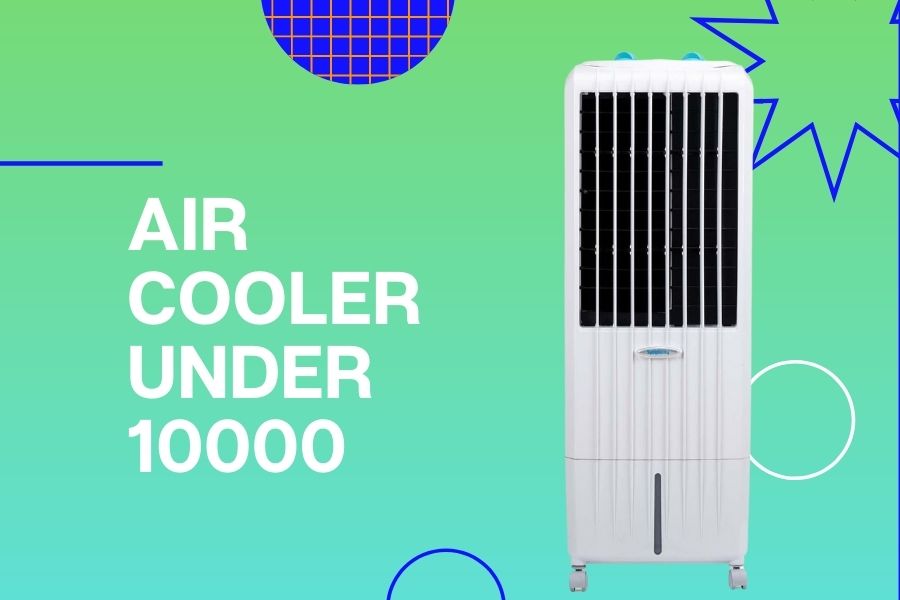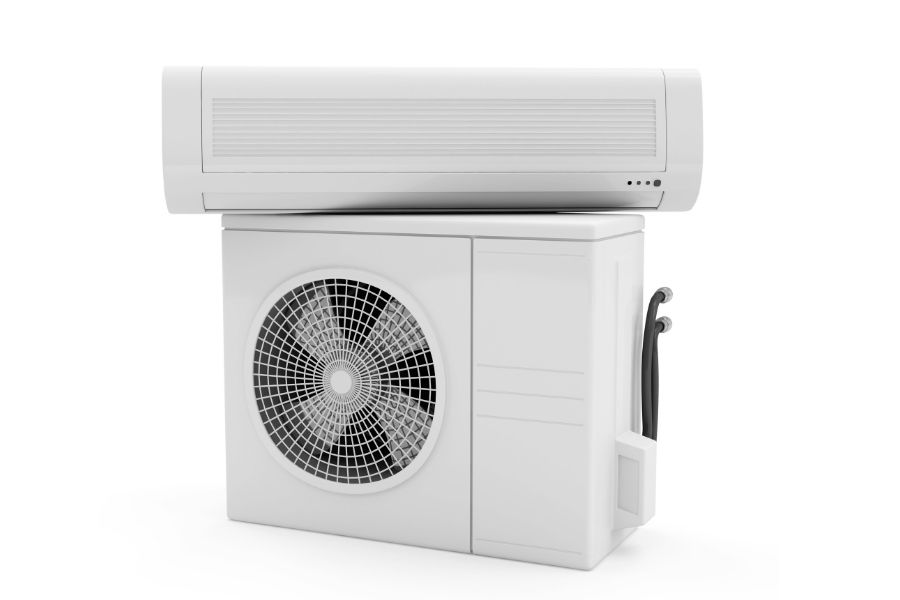
In the current scenario, with increasing temperatures and humidity across India; air conditioners are found in almost all households. Because of the same reason the AC market in India is projected to grow at a CAGR of 9% from the period between 2023-to -2027 and can be worth more than IND5,00, crores. This growth is driven by different reasons such as rising incomes, cheap pricing, easy finance programs and widespread distribution across various cities and towns.
In India, there are many things to be taken into consideration when purchasing an air conditioner – type of AC (window/split / inverter etc), capacity, energy ratings and features as well as budget. The market is dominated by split ACs with more than 60% share followed closely by window AC at around 30%.
Voltas, LG, Samsung Daikin among others provide a wide variety of products. Basic models start from as low as ₹20,000 and go up to ₹65,000 or more for premium ACs that have advanced features. In general, the AC market has something for all types of buyers based on needs and budget. We are here to help you make the right buying decision by highlighting the important factors that you must consider while buying an AC.
Things to Know When Buying an AC in India: The Buying Guide
The purchase of an air conditioner can be both exciting and confusing, in particular if it is your first time. Do not fret, we are here to assist you in the process so that you make a good decision. With some vital considerations and pro tips, you’ll be chilling in no time!
Types of Air Conditioners: To start with, you must first consider the types of ACs present in India. The most common types of ACs in India are:
Split ACs: Such ACshave an outdoor compressor and condenser unit that is attached to the indoor part. Less noisy and more energy saving. They are quite suitable for medium to large rooms.
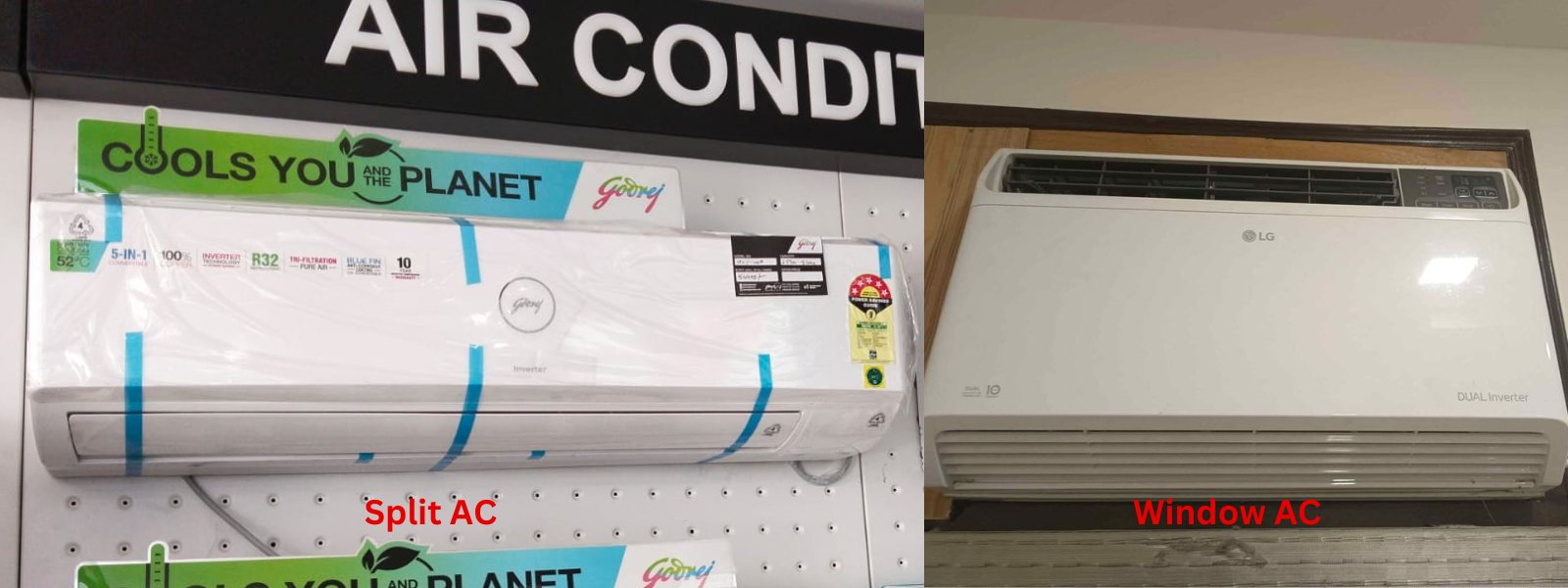
Window ACs: These are single self-contained unit installed in window frame. They are popular for being an inexpensive choice for small rooms.
Inverter ACs: Such ACs comes in variable speed compressors that regulate cooling according to heat load. They are the most energy efficient, yet can be quite expensive.
Portable ACs: As for portable ACs they are the ones that can be rolled from room to another. Although they are less efficient but are quite suitable for spot cooling.
Each type has its own advantages and disadvantages. You have to understand your requirements and pick the one that will fit the best accordingly. Following we have mentioned their features and placed them side by side to help you understand your requirements and the perfect fit:
| Feature | Split ACs | Window ACs | Inverter ACs | Portable ACs |
| Installation | Outdoor compressor and condenser unit connected to indoor unit | Single self-contained unit installed in window frame | Similar to Split ACs but with variable speed compressors | Can be easily moved room to room on wheels |
| Efficiency | Quieter and more energy-efficient | Affordable but less energy-efficient | Most energy-efficient due to variable speed compressors | Less efficient compared to other types, suitable for spot cooling |
| Room Size | Good for medium to large rooms | Best suited for small rooms | Suitable for various room sizes | Suited for spot cooling in small to medium-sized spaces |
| Cost | Moderately expensive compared to Window ACs | Affordable option, usually lower initial cost | Expensive upfront cost, but energy savings over time | Generally more affordable upfront, but less energy-efficient |
| Cooling Control | Individual control for each indoor unit, zoned cooling possible | Limited control, cools entire room | Precise temperature control with variable speed | Limited control, typically a single thermostat setting |
| Mobility | Fixed installation, not easily movable | Fixed installation, but can be removed for seasonal storage | Fixed installation, not easily movable | Portable and can be moved easily between rooms |
| Aesthetics | Minimal visual impact, indoor unit can be concealed | Visible unit in the window frame, may obstruct the view | Minimal visual impact, indoor unit can be concealed | Visible unit, may take up floor space and require window access |
| Ease of Installation | Requires professional installation for outdoor unit | Relatively easy installation, often DIY-friendly | Requires professional installation | DIY-friendly, typically comes with window installation kit |
| Ventilation Requirements | Requires proper ventilation for outdoor unit | Requires window for installation, may restrict ventilation | Requires proper ventilation for outdoor unit | Requires window for ventilation, includes a flexible exhaust hose |
| Suitable Climate | Suitable for all climates, efficient in both hot and cold | Better for moderate climates, may struggle in extreme heat | Suitable for all climates, efficient in both hot and cold | Suitable for all climates, but may struggle in extreme heat |
Capacity and Room Size:
In choosing the type to buy, consider such factors as room size and usage, budget along with energy efficiency.
- 1 ton AC – Perfect for a small room up to 120 sq ft
- 1.5 ton AC – ideal for medium sized rooms of between 120-180 sq ft
- 2 ton AC– Ideal for large rooms of around 180-300 sq ft
In general, for a typical 10 ft height room go with the AC load of about one ton per every 100-15 sq feet.
Inverter Technology:
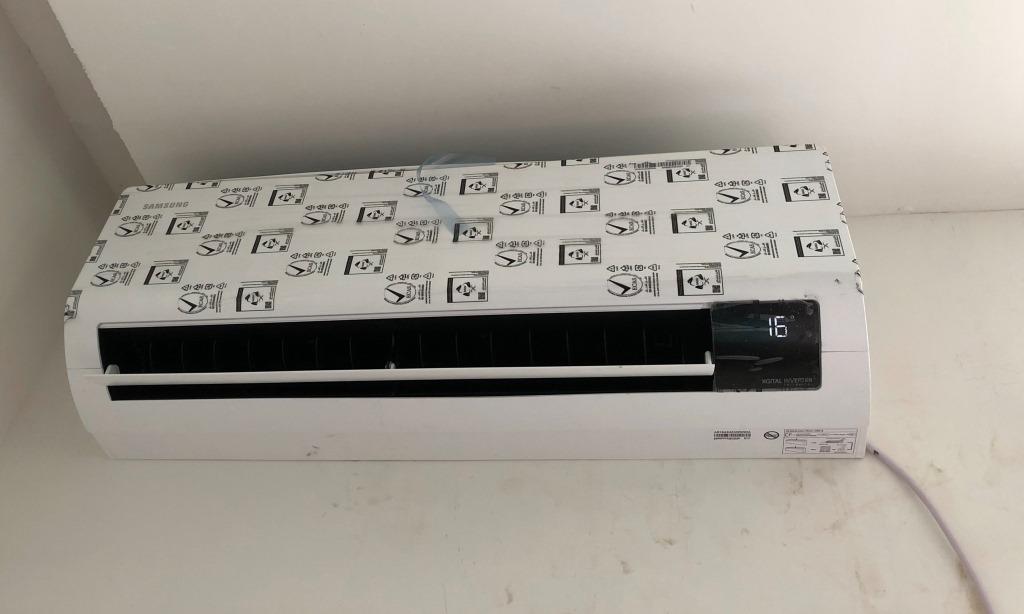
Consider checking for the inverter technology in the AC. Different speed compressor in Inverter ACs adjusts power as per the heat load. This enables the AC to keep a constant temperature without switching on and off repeatedly. The inverter ACs use 30-50% less electricity than the non-inverters and this makes them energy efficient. They also run with lower noise levels and cause less damage to the parts. Although more expensive initially, inverter ACs are less costly over time with the cheaper electricity bills.
Copper Condenser:
Look for a copper condenser as the condenser coils of an AC release heat outside the room. Copper condenser coils are more robust, effective and need less work than aluminum ones. Copper is a good conductor and conducts heat faster from refrigerant to the outside. Pressure is withstood better by the coils and they do not corrode as quickly like aluminum. In general, copper condenser ACs outperform aluminum condenser ones in terms of the lifespan and performance.
High ISEER Rating:
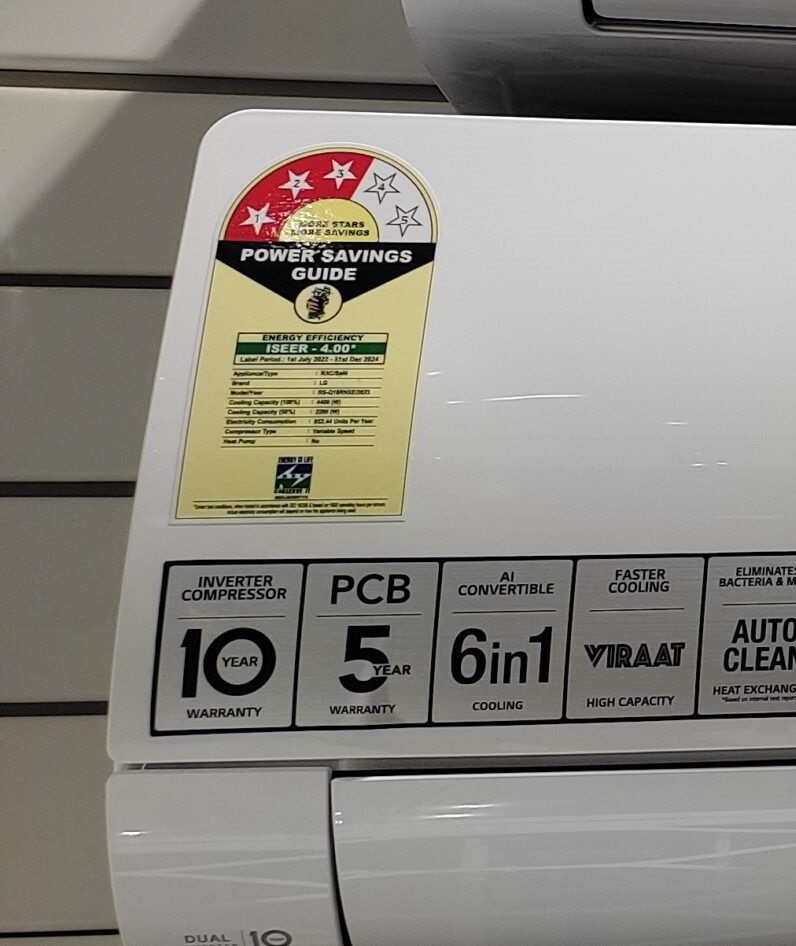
Go for ACs that has great ISEER or Indian Seasonal Energy Efficiency Ratio as it shows how energy efficient an AC is. The ISEER rating is directly proportional to the energy efficiency of an AC. The majority of ACs have ISEER ratings between 3 and 5. Select models with a rating of at least 4 but preferably 5-star ACs as they are most efficient. The high initial cost is offset by savings on electricity bills within 2-3 years. High ISEER ACs also assist in decreasing your carbon footprint.
Stabilizer Free Operation:
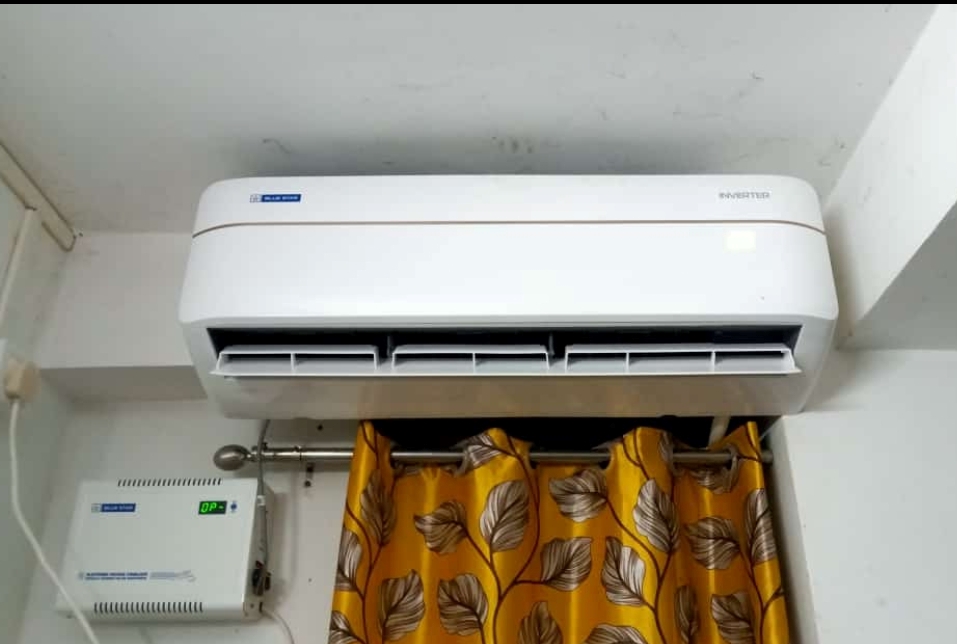
AC components may be adversely affected by voltage fluctuations. ACs that are stabilizer-free have inbuilt voltage fluctuation guards to withstand fluctuations of 165V – 290 V without the need for an external stabiliser. This avoids the cost of purchasing a voltage stabilizer. Automatic restart of stabilizer-free ACs upon return to normal voltage after power cuts is also observed.
Air Purifying Filters:
Next check for the filters of the AC and ensure it comes with air purifier filters.Now, you might wonder why.The answer to this is that as much it will be surprising to you, but it is true that air inside is usually dirtier than air outside. The ACs with air purifying filters increase the quality of indoor environment by collecting dust, pollen, pet dander mold spores bacteria and microbes from conditioned air. Filters clean the air and get rid of allergens thereby making it easier to breathe. Other filters also have activated carbon, antioxidants and catching to counteract bad fumes, odors etc.
Low Gas Detection:
Consider looking for low gas detector in an AC.Certain sophisticated ACs have gas leak detection technology. Refrigerant gas leaks are detected by the sensors and user is alerted with audio-visual alarms also system gets switched off to prevent any accident. This further ensures safety and prevents inhalation of toxic gases. Gas leak detectors give assurance that any leaks will be detected early before they progress into significant problems.
Remote Control:
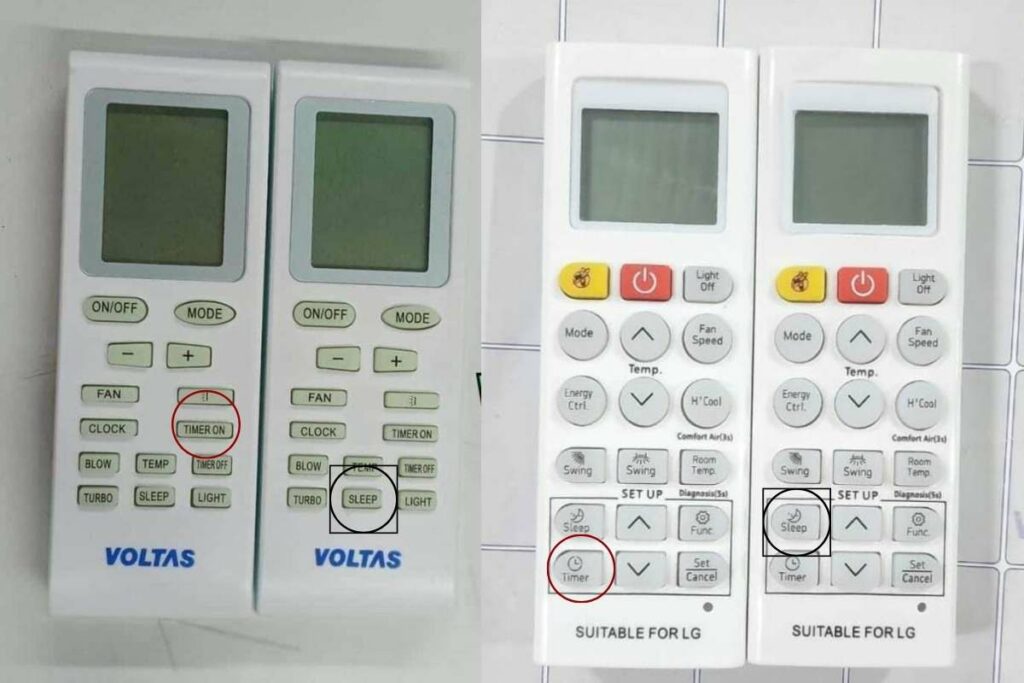
Since, the majority of split and window ACs are supplied with an infrared or WiFi-enabled remote control, it makes sense to expect one for your AC too. This enables you to control the AC from any part of the room. You can turn on/off, adjust temperature settings, change modes etc. without the need to visit unit itself. The remote controls offer comfort and convenience to operate the AC as per your desires. Some remotes also show the temperature, faults if any.
Auto Restart:
Auto restart is one of the features that are quite useful in ACs which automatically turns on after a power cut. The AC resumes the same settings for temperature, mode and fan speed that it had before power failure. This eliminates the stress of having to manually restart and reset AC. Auto restart guarantees continuous cooling, especially during peak summer where power cuts are common.
Sleep Mode:
Check for sleep mode in ACs as it is a gradual process of changing the temperature over an interval time to make it more convenient for sleeping. At bed you can set the AC to increase temperature by 1-2 degree Celsius over say next two hours. This keeps the room from being too cold while sleeping. Sleep mode maximizes cooling and power saving during the night when temperature demand is different.
Timer Function:
The timer feature in ACs lets you ON and OFF timings according to your daily schedule. This will enable the AC to be turned on before you wake up or arrive home and off when not needed. Timers can be set in 30-minute to 24 -hour intervals. This ensures convenience and energy saving as the AC is switched on only when required. No more coming home to a hot house!
Dehumidifier:
The dehumidifier in the AC reduces excess moisture from ambient air and lowers humidity levels. The AC cools air as well as dehumidifies the environment for a more comfortable climate. Dehumidification also eliminates mold, bacterial growth and condensation as well as prevents rotting of wooden furniture during the damp monsoon season.
Costs:
Next, let’s go over the costs involved so you can budget accordingly:
| Aspect | Details |
| AC Unit Price | Between Rs 25,000 and Rs 60,047 based on brand model capacity EER ratings among other factors like inverter technology. |
| Installation Charges | Window ACs: Around Rs 100-150. Split ACs: Rs 2000-2500 Installation charges may be different depending on the complexity of installation and other requirements. |
| Stabilizer | Rs 4000-6,5oo for a stabilizer and advised to protect the AC from voltage variations. It guarantees a steady supply of energy, thus increasing the life span of that air conditioning unit. |
| Annual Maintenance | Rs 1500-2500 per service, recommended servicing after every six months. The regular maintenance improves efficiency, lowers energy usage and extends the life of AC. |
| Electricity Consumption | Inverter ACs generally use 30-50% less energy than non inverters. They provide energy savings by varying the speed of compressor according to cooling demand thereby increasing overall efficiency. |
Please note that these are just estimates and the actual cost may differ depending on factors such as location, installation difficulty, or specific brand/model characteristics. To save on the initial cost, you can search for discounts on e-commerce sites or go shopping when the stores are having sales
Pros and cons of owning an AC in India:
Here is an analysis on the pros and cons of owning an air conditioner (AC) in India:
| Pros: | Cons: |
| In India, where the climate is hot most of the time and ACs are installed in homes as well offices have a higher rental value. | Running an AC for 8-10 hours per day can increase the electricity bills to a great extent, in most cases it is more than double. |
| Research has indicated that severe heat negatively affects cognition and productivity. People can concentrate better at work and home due to the cooler indoor temperatures from ACs. | Technicians need to regularly service ACs in order for them to run efficiently. Failure to maintain can cause increased operating costs and constant repairs. |
| ACs assist in maintaining temperatures for a comfortable sleeping environment. Quality sleep leads to better health and well-being. | The majority of ACs employ refrigerants that have high global warming potential. Increase in AC use as income levels rise will further increase greenhouse gas emissions. |
| ACs limit health hazards as they help avoid heat related diseases. | Poorly maintained ACs can collect dust and microbes that spread allergens and diseases inside. If there is a huge difference between the temperatures inside and outdoors, people can catch cold. |
ACs offer essential relief from the unbearably hot Indian summers but entail high ownership costs and environmental damage. The cons attached to ACs can also be minimized through careful and proper use as well as maintenance.
Maintenance tips to ensure your AC runs for years:
Following are some simple maintenance tips for your AC that can help it run smoothly for the years to come:
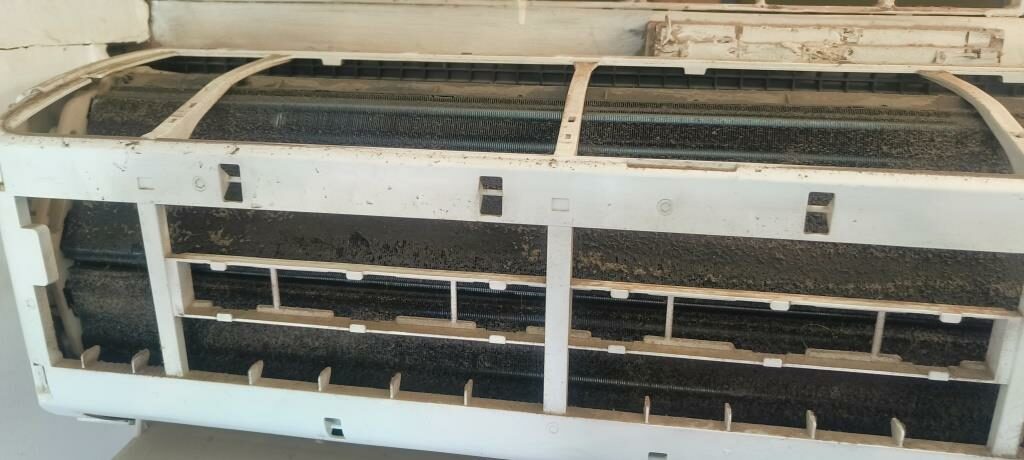
- Service AC every 6 months by a certified technician
- Clean air filters every month to remove dust and improve the amount of air flow
- Clean the AC unit with a wet cloth to prevent dirt accumulation
- Install outdoor units in shade so that the direct sunlight does not heat
- Ensure that doors/windows are closed, when AC is on so as to minimize heat penetration into the room.
- However, if you encounter power fluctuations use a voltage stabilizer.
- Turn on fan mode for 10 mins before switching off AC to dry coils.
Expert opinion:
The key factors to consider when buying an air conditioner in India are the type of AC, cooling capacity, energy efficiency rating (EER), features and brand reliability as well as budget. The cooling capacity or tonnage should match the size of a room. The most efficient in terms of energy consumption are the Inverter ACs. It is preferable to use famous brands such as Daikin, LG and Voltas etc that have good service networks. Pay attention on the fact that the AC is properly installed so as to make it more efficient. The regular maintenance such as timely cleaning of filters and refilling gas is a must and clearly unavoidable. If you consider these crucial factors you can easily make the right AC purchase based on your needs and budget in India.
Conclusion:
We hope that this detailed AC buying guide has given you all the information required to make a perfect purchase. With the main points discussed you are now armed with all the knowledge needed to navigate through this complicated market like a pro!
Although the best experience is provided by high-end inverter ACs, even entry models can provide much needed relief on days when it feels like a furnace outside. Concentrate on picking the appropriate capacity and maximum energy efficiency within your budget.
The installation is equally important to ensure optimal performance. And don’t forget about the regular maintenance – it is what keeps your air conditioner running like a brand new one even after years of use. We recommend you to use this guide as a checklist in the process of shopping.




